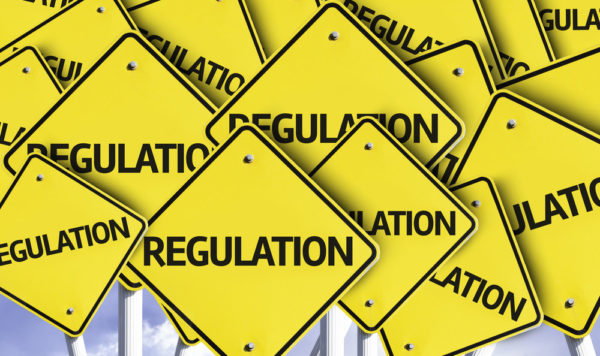Item 408 Of Regulation S-K
Item 408 of Regulation S-K: A Comprehensive Guide
Regulation S-K is a set of rules and regulations created by the U.S. Securities and Exchange Commission (SEC) to govern the disclosure requirements of public companies. Among the various items outlined in Regulation S-K, Item 408 holds significant importance. In this article, we will delve into Item 408 and explore its implications for companies seeking to go public.
Understanding Item 408

Item 408 of Regulation S-K deals with the financial statements and exhibits required to be filed as part of the registration statements or reports filed with the SEC. It sets forth the specific information that must be disclosed in these financial statements to ensure transparency and provide investors with a clear picture of the company's financial health.
The Importance of Financial Statements

Financial statements play a crucial role in the evaluation of a company's financial performance and position. They provide important information regarding a company's revenues, expenses, assets, liabilities, and cash flows. By requiring companies to disclose these financial statements, Item 408 aims to ensure that investors have access to accurate and reliable information to make informed investment decisions.
Compliance with Item 408
Complying with Item 408 requires companies to prepare and disclose specific financial statements and exhibits as part of their registration statements or reports. Here are some key requirements:
1. Balance Sheets

Balance sheets provide a snapshot of a company's financial position at a specific point in time. They present information about the company's assets, liabilities, and shareholders' equity. By including balance sheets in their filings, companies enable investors to assess their financial stability and evaluate their ability to meet short-term and long-term obligations.
2. Income Statements

Income statements, also known as profit and loss statements, highlight a company's revenues, expenses, and net income or loss over a period of time. These statements help investors understand the company's profitability, efficiency, and overall financial performance. By disclosing income statements, companies provide transparency on their revenue-generating activities and their ability to control costs.
3. Cash Flow Statements

Cash flow statements track the inflows and outflows of cash within a company over a specific period. They provide insights into a company's liquidity, operating activities, investing activities, and financing activities. By including cash flow statements in their filings, companies allow investors to assess their ability to generate and utilize cash effectively.
Frequently Asked Questions (FAQ)
Q: What other exhibits are required to be filed under Item 408?
A: In addition to the financial statements mentioned above, Item 408 also requires companies to file other exhibits such as notes to financial statements, management certifications, and auditor reports.
Q: How often should companies update their financial statements?
A: Companies are required to update their financial statements on an annual basis. However, if there are any material changes that could have a significant impact on the financial statements, companies must disclose them in a timely manner.
Q: Are there any exemptions to Item 408?
A: Yes, certain smaller reporting companies may qualify for exemptions or reduced disclosure requirements under Item 408. These exemptions are designed to ease the regulatory burden on smaller companies while still ensuring a certain level of transparency.
Conclusion
Item 408 of Regulation S-K plays a vital role in ensuring transparency and accountability in the disclosure requirements of public companies. By mandating the inclusion of financial statements and exhibits, the SEC aims to protect investors and provide them with the necessary information to make informed investment decisions. Compliance with Item 408 is imperative for companies seeking to go public, as it enables them to demonstrate their financial stability and gain investors' trust.
Disclaimer: This article is intended for informational purposes only and should not be construed as legal or financial advice. Please consult with a qualified professional for guidance on complying with Regulation S-K and any other applicable laws and regulations.
SEC Regulation S-K - YouTube
 Image Source : www.youtube.com
Image Source : www.youtube.com sec
SEC Adopts Further Changes To Regulation S-K
 Image Source : frv.kpmg.us
Image Source : frv.kpmg.us Fillable Online CC-355 V1 STATE OF ILLINOIS IN THE CIRCUIT
 Image Source : www.pdffiller.com
Image Source : www.pdffiller.com Cybersecurity Experience Disclosure | SEC Disclosure Requirement
 Image Source : ocd-tech.com
Image Source : ocd-tech.com Regulation S-K 1300: Disclosure Regime - YouTube
 Image Source : www.youtube.com
Image Source : www.youtube.com SEC Staff Issues Report With Recommendations To Numerous Regulation S-K
 Image Source : www.marcumllp.com
Image Source : www.marcumllp.com requirements disclosure regulation numerous sec recommendations issues staff report lawrence montgomery assurance manager services
Regulation S-K Item 507 - Going Public Attorneys
 Image Source : www.securitieslawyer101.com
Image Source : www.securitieslawyer101.com SEC Amends Regulation S-K Item 101, 103 And 105
 Image Source : www.securitieslawyer101.com
Image Source : www.securitieslawyer101.com amends
Regulation s-k item 507. Regulation s-k 1300: disclosure regime. Sec amends regulation s-k item 101, 103 and 105. Sec adopts further changes to regulation s-k. Requirements disclosure regulation numerous sec recommendations issues staff report lawrence montgomery assurance manager services